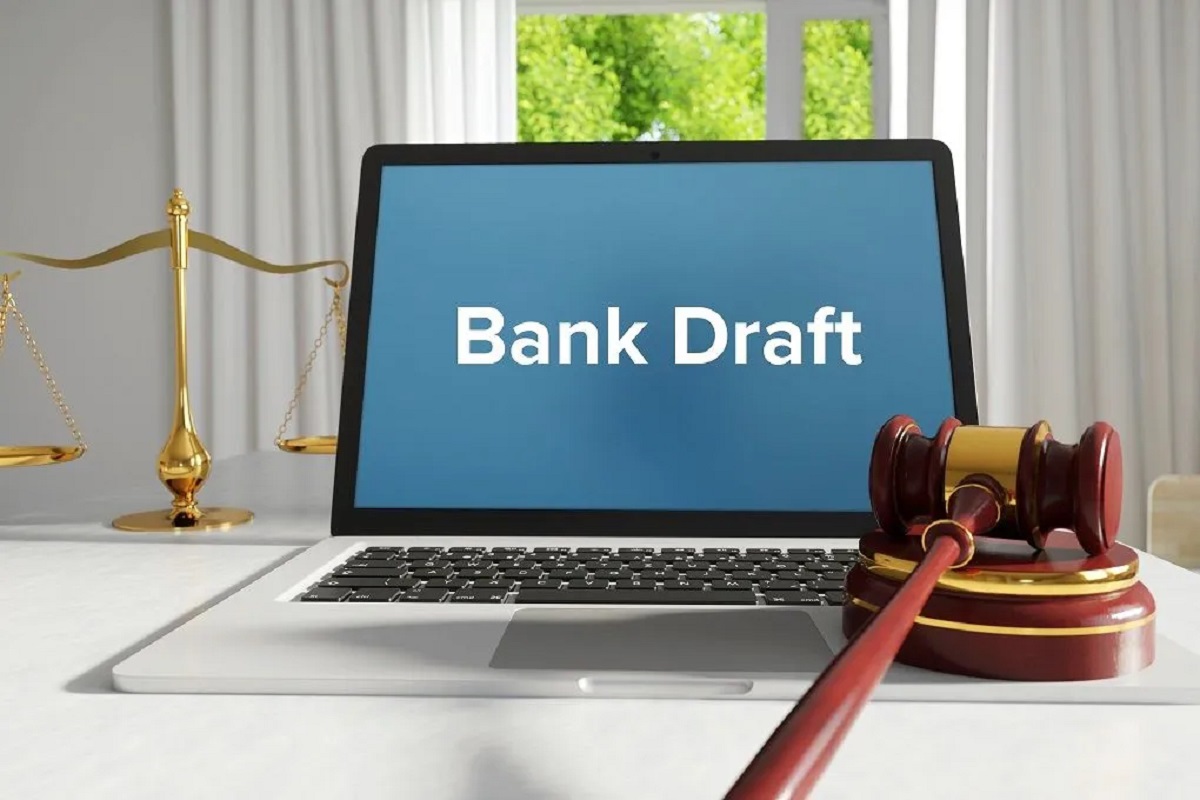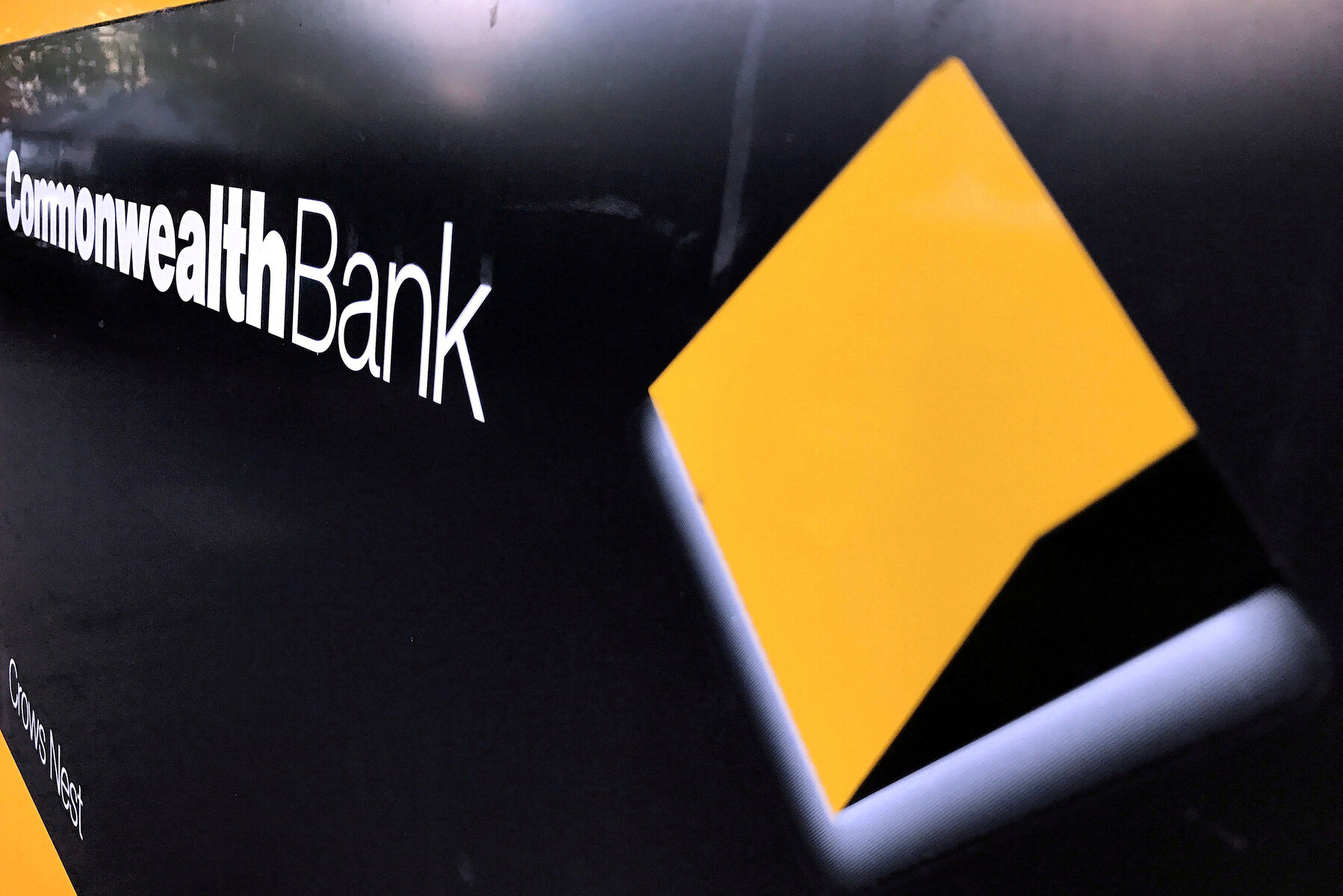Definition of a Draft in Banking
A draft, in the context of banking, refers to a written order that instructs a bank to pay a specific amount of money from one account to another. It is a common financial instrument used in banking transactions for facilitating payments between individuals, businesses, or financial institutions. Also known as a bank draft or a cashier’s check, a draft is considered a safe and convenient method of transferring funds.
When a draft is issued, it serves as a legally binding document that authorizes the bank to transfer the specified amount of money from the account of the person or entity who issued the draft (known as the drawer) to the recipient (known as the payee) identified on the draft. The draft contains essential details such as the names of the parties involved, the amount to be paid, and any necessary instructions or conditions.
Drafts are often used for various financial transactions, including payment of bills, purchase of goods and services, and money transfers. They are commonly employed in situations where immediate payment is required, and the payee prefers the security and certainty of a bank-issued payment instrument.
Unlike personal checks, drafts typically require the drawer to have sufficient funds available in their account before the draft is issued. This ensures that the draft will not bounce or be declined due to insufficient funds. As a result, drafts are generally considered a reliable form of payment, offering a level of certainty and assurance to both the payee and the recipient.
It’s important to note that drafts can be used both domestically and internationally, providing a convenient solution for cross-border transactions. In international banking, drafts are often used in foreign currency transactions to avoid issues related to exchange rates and foreign payment processing.
Overall, drafts play a crucial role in the banking industry by facilitating secure and efficient payments. Their widespread use is a testament to their reliability and convenience in financial transactions for individuals and businesses alike.
How Drafts Are Used in Banking Transactions
Drafts are widely used in banking transactions due to their convenience and security. They offer a reliable method for transferring funds between parties, both domestically and internationally. Let’s explore some common use cases for drafts in banking:
1. Payment of Bills: Individuals and businesses can use drafts to pay their bills efficiently. Instead of issuing personal checks or making cash payments, a draft provides a more secure and traceable method to settle financial obligations. By issuing a draft, the payer authorizes their bank to transfer the specified amount to the payee’s account.
2. Purchase of Goods and Services: Drafts are often used in commercial transactions, especially when dealing with large sums of money. Businesses can issue drafts to suppliers or vendors to pay for goods or services rendered. This provides a level of trust and assurance to the recipient, as the draft guarantees that the payment will be made.
3. Money Transfers: Drafts offer a practical solution for sending money to other individuals or entities. Whether it’s for personal reasons, such as sending money to family or friends, or for business purposes, drafts provide a secure channel to transfer funds without the need for physical cash or electronic transfers.
4. Real Estate Transactions: When purchasing or selling property, drafts are often used to handle the large sums of money involved. By issuing a draft for the agreed-upon amount, the buyer demonstrates their seriousness and commitment to the transaction. This provides reassurance to the seller and ensures a smooth transfer of funds.
5. Loan Disbursements and Repayments: Financial institutions utilize drafts in loan disbursements, especially for large loans. Instead of issuing cash or electronic transfers, banks can provide borrowers with drafts that can be cashed or deposited into their accounts. Similarly, borrowers can use drafts to repay their loans, ensuring that the funds are securely transferred to the lender.
In each of these scenarios, drafts serve as a safe and reliable method for facilitating financial transactions. They offer a level of certainty for both the payer and the payee, reducing the risk of bounced checks or delayed payments. Additionally, drafts provide a paper trail that helps with record-keeping and reconciliation.
The use of drafts in banking transactions is not limited to a specific sector or industry. It is a versatile tool utilized by individuals, businesses, and financial institutions to conduct various financial activities securely and efficiently.
Benefits and Drawbacks of Using Drafts in Banking
Using drafts in banking transactions offers several benefits, but it is important to consider the drawbacks as well. Let’s explore both sides of the equation:
Benefits:
1. Security: One of the primary advantages of using drafts is the enhanced security they provide. Unlike personal checks, drafts are guaranteed funds, as they are issued by the bank itself. This eliminates the risk of insufficient funds or the possibility of a bounced check, giving both the payer and the payee peace of mind.
2. Trackability: Drafts offer a reliable way to track the payment process. Since drafts involve the bank’s involvement, they provide a clear paper trail for both parties. This traceability can be useful for accounting purposes, dispute resolution, and overall transparency in financial transactions.
3. Wide Acceptance: Drafts are widely accepted, both domestically and internationally. They are recognized as a legitimate and trusted form of payment in various industries and regions. This broad acceptance makes drafts a convenient option for conducting business and managing financial transactions.
4. Convenience: Using drafts can be more convenient than carrying large amounts of cash or waiting for electronic transfers to complete. With drafts, individuals and businesses can easily transfer funds without the need for physical currency, and the payee can simply deposit or cash the draft at their convenience.
Drawbacks:
1. Fees and Charges: One drawback of using drafts is the associated fees and charges. Banks may impose fees for issuing a draft, which can vary depending on the amount and the type of draft. It is important to consider these costs when deciding to use a draft, as they can add up, particularly for large transactions.
2. Processing Time: Another drawback is the processing time involved with drafts. While electronic transfers can occur almost instantly, drafts typically require additional time to clear. The payee may need to wait for the draft to be presented to their bank and go through the necessary verification process before the funds are made available.
3. Limited Authorization: Once a draft is issued, the payer typically has limited control over its cancellation or alteration. This lack of flexibility can be a drawback in situations where changes to the payment amount or recipient are required. Additionally, if a draft is lost or stolen, it may pose challenges in retrieving or halting the transaction.
4. International Considerations: When using drafts for international transactions, currency exchange rates and processing times can become factors to consider. The conversion of funds into the recipient’s local currency and any applicable fees may impact the final amount received. Additionally, international drafts may require additional documentation and compliance with foreign banking regulations.
Overall, using drafts in banking transactions has its benefits in terms of security, trackability, and convenience. However, it is important to be aware of the associated fees, processing time, limited authorization, and international considerations. Evaluating these factors will help individuals and businesses make informed decisions about whether to use drafts as a payment method.
Different Types of Drafts Used in Banking
There are various types of drafts used in banking to cater to different needs and scenarios. Each type of draft serves a specific purpose and offers unique features. Let’s explore some of the most common types of drafts:
1. Sight Draft: A sight draft, also known as a demand draft or a sight bill, is payable on demand. This means that it must be paid as soon as it is presented to the drawee, typically a bank. Sight drafts offer immediate payment and are often used in situations where prompt settlement is required, such as in the payment of invoices or urgent financial transactions.
2. Time Draft: Unlike a sight draft, a time draft specifies a specific future date for payment. The payment is due at a later time, typically after a certain number of days, known as the draft’s tenor. Time drafts provide flexibility for the drawee to arrange for funds to be available on the specified date. They can be used in trade finance, allowing buyers time to complete transactions while providing sellers with assurance of payment.
3. Banker’s Draft/Cashier’s Check: A banker’s draft, also known as a cashier’s check, is drawn by a bank on its own funds. It is considered a guaranteed form of payment as the bank ensures that the necessary funds are available. Banker’s drafts are commonly used for large payments, such as down payments for real estate purchases or high-value transactions that require immediate settlement.
4. Traveler’s Checks: Traveler’s checks are a type of draft specifically designed for travelers. They are pre-printed, fixed-denomination checks that can be used as a secure alternative to carrying cash. Traveler’s checks are typically issued by banks and can be replaced if lost or stolen. They offer convenience and peace of mind for those traveling to areas where cash or other payment methods may be less secure.
5. Electronic Draft: With advancements in technology, electronic drafts have become a popular option for banking transactions. These drafts are created and processed electronically, without the need for physical paper documents. Electronic drafts offer speed and convenience, allowing for seamless and instant transfer of funds between accounts.
6. Confirmation Draft: A confirmation draft, or confirmed draft, provides an additional layer of assurance in international trade transactions. It involves a third party, typically a correspondent bank or a confirming bank, confirming the validity and payment commitment of the draft on behalf of the drawee. Confirmation drafts help mitigate payment risks and build trust between parties in cross-border transactions.
These are just a few examples of the different types of drafts used in banking. The specific type of draft chosen depends on the nature of the transaction, the payment terms agreed upon, and the level of assurance and convenience required by the parties involved.
The Process of Issuing and Clearing a Draft
The process of issuing and clearing a draft involves several steps to ensure the smooth transfer of funds between parties. Let’s explore the typical process involved in issuing and clearing a draft:
1. Draft Issuance: The process begins when the drawer, the individual or entity initiating the payment, requests the issuing bank to issue a draft. The drawer provides the necessary details, including the recipient’s name, the payment amount, and any specific instructions. The issuing bank verifies the availability of funds in the drawer’s account and prepares the draft.
2. Draft Delivery: Once the draft is prepared, the issuing bank delivers it to the drawer. Depending on the circumstances, the delivery can be physical, such as a paper draft, or electronic, such as a digital representation of the draft. If it is a physical draft like a banker’s draft, it may be collected by the drawer or sent via mail, courier, or electronic delivery depending on the agreed-upon method.
3. Draft Presentation: The recipient, also known as the payee, receives the draft and presents it to their bank for payment. The payee’s bank verifies the draft’s authenticity and compares the details to the recipient’s account information. If everything is in order, the payee’s bank accepts the draft for processing.
4. Draft Verification: After accepting the draft, the payee’s bank verifies the funds’ availability in the drawer’s account at the issuing bank. This process ensures that the drawer has sufficient funds to cover the amount specified in the draft. If the funds are available, the payee’s bank proceeds with the clearance process.
5. Funds Transfer: Once the funds’ availability is confirmed, the payee’s bank initiates the process of transferring the funds from the drawer’s account to the payee’s account. This transfer can occur electronically between the respective banks or through the clearinghouse system, depending on the banking infrastructure in place.
6. Notification and Clearance: Once the funds transfer is complete, the payee’s bank notifies the payee about the successful clearance of the draft. The payee can then access the funds in their account and use them as needed. The entire process, from draft presentation to fund clearance, usually takes a few business days, but the duration may vary depending on the banks involved and any intermediary steps.
It’s important to note that fees may be applicable during this process, including draft issuance fees and potential clearance fees imposed by the banks. These fees vary depending on the bank and the type of draft being processed.
The process of issuing and clearing a draft requires cooperation between multiple parties, including the drawer, the issuing bank, the payee, and the payee’s bank. The process aims to ensure the secure transfer of funds and provide a reliable method of payment in banking transactions.
How Drafts Can Be Used for International Banking Transactions
Drafts are a valuable tool for facilitating international banking transactions, providing a secure and efficient method of transferring funds across borders. Let’s explore how drafts can be used in international banking:
1. Currency Conversion: When conducting international transactions, currencies often need to be converted. Drafts can be used to overcome the challenges of fluctuating exchange rates and foreign currency processing. By issuing a draft in the recipient’s local currency, the sender can ensure that the payment is received in a familiar currency without the need for the recipient to handle the currency conversion.
2. Payment Assurance: Drafts offer an added layer of payment assurance in international transactions. By using a draft, the sender guarantees that the specified amount will be paid to the recipient. This assurance is especially valuable when there is a lack of trust between parties due to geographical distance or unfamiliarity with each other’s financial systems.
3. Compliance with Regulations: International banking transactions can be subject to various regulatory requirements and restrictions. Drafts can help facilitate compliance with these regulations, as they are issued by regulated financial institutions and provide a transparent record of payment. This can ease the process of international fund transfers and ensure adherence to legal and regulatory requirements.
4. Documentary Support: In certain international trade transactions, drafts can be accompanied by supporting documents such as invoices, shipping documents, or letters of credit. These documents provide evidence of the underlying transaction and offer additional security and verifiability. When drafts are used in conjunction with proper documentation, they can streamline the trade process and mitigate risks for both importers and exporters.
5. Clearing through Correspondent Banks: Many banks have established relationships with correspondent banks in foreign countries. These correspondent banks act as intermediaries, playing a crucial role in facilitating the clearing and processing of drafts across different banking systems. By utilizing correspondent bank networks, drafts can be efficiently cleared and funds transferred between the sender’s and recipient’s banks.
6. Remittances and Money Transfers: Individuals sending money to their families or friends abroad can benefit from using drafts as a secure and cost-effective method. By issuing a draft in the recipient’s local currency, the sender can ensure that the funds are easily accessible and can be conveniently converted into the local currency when needed.
By leveraging the advantages of drafts in international banking transactions, individuals and businesses can overcome the challenges associated with cross-border payments. Drafts enable secure and reliable fund transfers, compliance with regulations, seamless currency conversion, and efficient clearing processes through correspondent banks. They provide a practical solution for conducting international business and ensuring smooth financial transactions across different countries and currencies.
Common Situations Where Drafts are Used in Banking
Drafts are commonly used in a variety of situations in the banking industry, providing a convenient and secure method of transferring funds. Let’s explore some common scenarios where drafts are frequently employed:
1. Real Estate Transactions: In real estate transactions, drafts are often used for payment of down payments, security deposits, or the balance of the purchase price. Drafts offer a level of certainty and assurance to both the buyer and the seller, ensuring that the necessary funds are available for the transaction and providing a paper trail for documentation purposes.
2. International Trade: Drafts play a crucial role in international trade transactions. Exporters often use drafts to receive payment from importers, ensuring that the funds are secure and transparent. In addition, drafts can be used in conjunction with other trade documents, such as letters of credit, invoices, and shipping documents, to provide a comprehensive and reliable payment mechanism in global trade.
3. Business Payments: Businesses frequently use drafts to make payments to suppliers, service providers, and contractors. Drafts offer a secure alternative to cash payments and help streamline the payment process by providing a clear and traceable record of the transaction. They are widely accepted and trusted in the business community, making them a preferred method of payment for many organizations.
4. Cross-Border Money Transfers: When individuals need to send money internationally, drafts offer a practical and secure solution. Drafts can be issued in the recipient’s local currency, allowing for ease of use and easy conversion into the desired currency. This method is particularly useful when electronic transfers or other payment options are not readily available or may be subject to higher fees.
5. Deposit Security: In some situations, drafts are used as a means of securing deposits for rental agreements, memberships, or large purchases. By providing a draft as a deposit, the payee can be assured that the funds are available and can be returned promptly when the deposit is no longer required. This provides a level of trust and protection for both parties involved.
6. Payment of Taxes and Government Fees: Government agencies often accept drafts for the payment of taxes, licensing fees, or other government-related charges. By using drafts, individuals and businesses can ensure that their payments are secure, properly recorded, and easily traceable, meeting their obligations to the government efficiently.
In each of these common situations, drafts serve as a reliable and accepted method of payment, providing security, convenience, and transparency in banking transactions. They offer the assurance that funds are available, enable traceable payments, and simplify financial processes for individuals, businesses, and government entities alike.
Understanding the Fees and Charges Associated with Drafts in Banking
When using drafts in banking transactions, it’s important to be aware of the fees and charges that may be associated with them. These fees vary depending on the bank, the type of draft, and the specific transaction. Let’s explore some common fees and charges related to drafts:
1. Draft Issuance Fee: Banks typically charge a fee for issuing a draft. This fee covers the administrative costs associated with preparing the draft, verifying the necessary details, and ensuring the availability of funds. The issuance fee can vary depending on the bank, the draft type, and the amount of the transaction.
2. Foreign Exchange Fees: If the draft involves currency conversion, banks may apply foreign exchange fees. These fees cover the costs associated with converting the funds from one currency to another. The exchange rate used and the percentage or fixed fee charged for the conversion can vary based on the bank’s policies and prevailing market rates.
3. Clearance Charges: Banks may impose clearance charges on the recipient when processing and clearing the draft. These charges cover the costs and services associated with verifying the draft, ensuring its authenticity, and facilitating the funds transfer. Clearance charges can vary based on the bank’s policies, the type of draft, and the amount of the transaction.
4. Correspondent Bank Fees: If the draft needs to be cleared through correspondent banks in foreign countries, additional fees may be incurred. Correspondent banks act as intermediaries, and their involvement in the clearance process may attract charges. These fees cover the services provided by correspondent banks to ensure the smooth processing and transfer of funds between different banking systems.
5. Amendment or Cancellation Fees: In some cases, the payer may need to amend or cancel a draft after it has been issued. Banks may charge fees for such requests, as they entail additional administrative work and may require changes in the payment details or cancellation of the original draft. Amendment or cancellation fees vary depending on the bank’s policies and the complexity of the requested changes.
6. Courier or Delivery Charges: If a physical draft needs to be delivered to the payer or the payee, banks may apply courier or delivery charges. These charges cover the cost of securely delivering the draft to the intended recipient. The fees can differ based on the delivery location, the urgency of the delivery, and the method used for the delivery.
It’s important to review the fee structure provided by the bank and inquire about any additional charges that may apply to the specific draft transaction. Understanding the fees and charges associated with drafts allows individuals and businesses to make informed decisions and plan accordingly, ensuring a smooth and cost-effective experience when using drafts in banking transactions.
Tips for Using Drafts Effectively in Banking Transactions
When using drafts in banking transactions, it’s important to follow certain guidelines to ensure a smooth and efficient process. Here are some tips for using drafts effectively:
1. Understand the Purpose: Before using a draft, it’s essential to understand its purpose and how it fits into your specific transaction. Determine whether a draft is the most suitable payment method based on factors such as security, convenience, and any specific requirements of the payee or the transaction itself.
2. Verify Draft Details: Double-check the details on the draft, such as the payee’s name, payment amount, and any specific instructions or conditions. Ensuring the accuracy of these details will help prevent errors or delays during the clearance process and minimize the chances of disputes or complications.
3. Be Aware of Time Frames: Understand the time frame associated with the use of drafts. Take into account the time required for the draft to be issued, delivered, presented to the recipient’s bank, and cleared. Keep in mind any specific cut-off times or business days when the processing of drafts may be limited.
4. Communicate Clearly: Maintain clear and open communication with the recipient of the draft. Provide any necessary information or documentation promptly and ensure that both parties are aligned on the expectations, such as the timing of payment and any specific requirements for the draft’s presentation.
5. Keep Records: Maintain a record of all draft-related documents, including the draft itself, any supporting documentation, and proof of delivery. This documentation will be valuable for record-keeping, reconciliation, and dispute resolution purposes in case any issues arise in the future.
6. Consider Timing and Expiration: Take into account any expiration dates or time limits associated with the draft. Some drafts may have an expiry date, after which they become invalid, while others may have time restrictions for presentation. Ensure that the draft is used or presented within the required time frame to avoid complications or the need for reissuing.
7. Be Mindful of Fees: Understand the fees associated with drafts and keep them in mind when planning your transaction. Consider factors such as issuance fees, clearance charges, foreign exchange fees, and any other applicable fees. Compare fee structures between different banks if possible to ensure you choose the most cost-effective option.
8. Seek Professional Guidance: If you are unfamiliar with the process of using drafts or have specific questions, consider consulting with a banking professional or financial advisor. They can provide guidance tailored to your specific needs and help you navigate any complexities or uncertainties related to drafts in banking transactions.
By following these tips, you can use drafts effectively in banking transactions, ensuring a smooth and successful process from initiation to clearance. Understanding the purpose, verifying details, being mindful of time frames and fees, and maintaining clear communication will help you make the most out of using drafts as a reliable and secure payment method.
The Role and Importance of Drafts in the Banking Industry
Drafts play a crucial role in the banking industry, serving as a secure and efficient method for transferring funds between parties. Their importance stems from the various benefits they offer both individuals and businesses. Let’s recap the role and significance of drafts:
Drafts provide a reliable means of payment, offering security and assurance to both the payer and the payee. Unlike personal checks, drafts guarantee that the necessary funds are available, minimizing the risk of bounced checks or insufficient funds. This reliability contributes to the overall trust and efficiency of financial transactions in the banking industry.
One of the key advantages of drafts is their widespread acceptance. Drafts are recognized as a legitimate and trusted payment instrument in various industries and regions. This broad acceptance allows individuals and businesses to confidently use drafts to settle payments, knowing that they are widely recognized and easily processed by banks.
Drafts also offer transparency and traceability in financial transactions. They leave a clear paper trail, providing documentation and evidence of the payment process. This traceability is not only beneficial for record-keeping purposes but also aids in dispute resolution and ensures accountability in financial transactions.
For international banking transactions, drafts provide a practical solution. They can be issued in the recipient’s local currency, facilitating cross-border payments without the need for complex currency conversions. Furthermore, drafts can comply with regulatory requirements and facilitate compliance in international trade, enhancing transparency and adherence to legal and regulatory standards.
Despite the advantages, it’s important to consider the associated fees and charges when using drafts. Banks may impose fees for draft issuance, foreign exchange, clearance, and other services related to drafts. Understanding these fees and making informed choices can help individuals and businesses manage their costs effectively.
Overall, drafts are an important tool in the banking industry, offering security, convenience, and efficient payment methods. Their role in facilitating various financial transactions, both domestically and internationally, cannot be overstated. By leveraging the benefits of drafts and adhering to best practices, individuals and businesses can ensure smooth and reliable transactions, contributing to the overall stability and functionality of the banking industry.

























